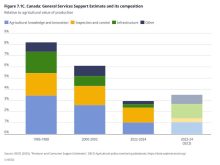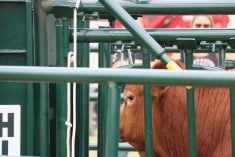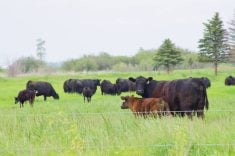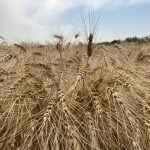A new report marks a win for a Canadian beef industry striving to minimize its carbon footprint.
The industry has reduced the greenhouse gas emissions required to produce one kilogram of beef (boneless and consumed) by 15 per cent since 2014, according to the recently released National Beef Sustainability Assessment (NBSA) and Strategy report.
“It’s exciting to see the 15 per cent reduction in GHG emissions intensity, which puts us on track to achieve the 33 per cent reduction 2030 goal that the industry has set,” wrote Ryan Beierbach, chair of the Canadian Roundtable for Sustainable Beef (CRSB),the publishers of the report, in a news release.
Read Also
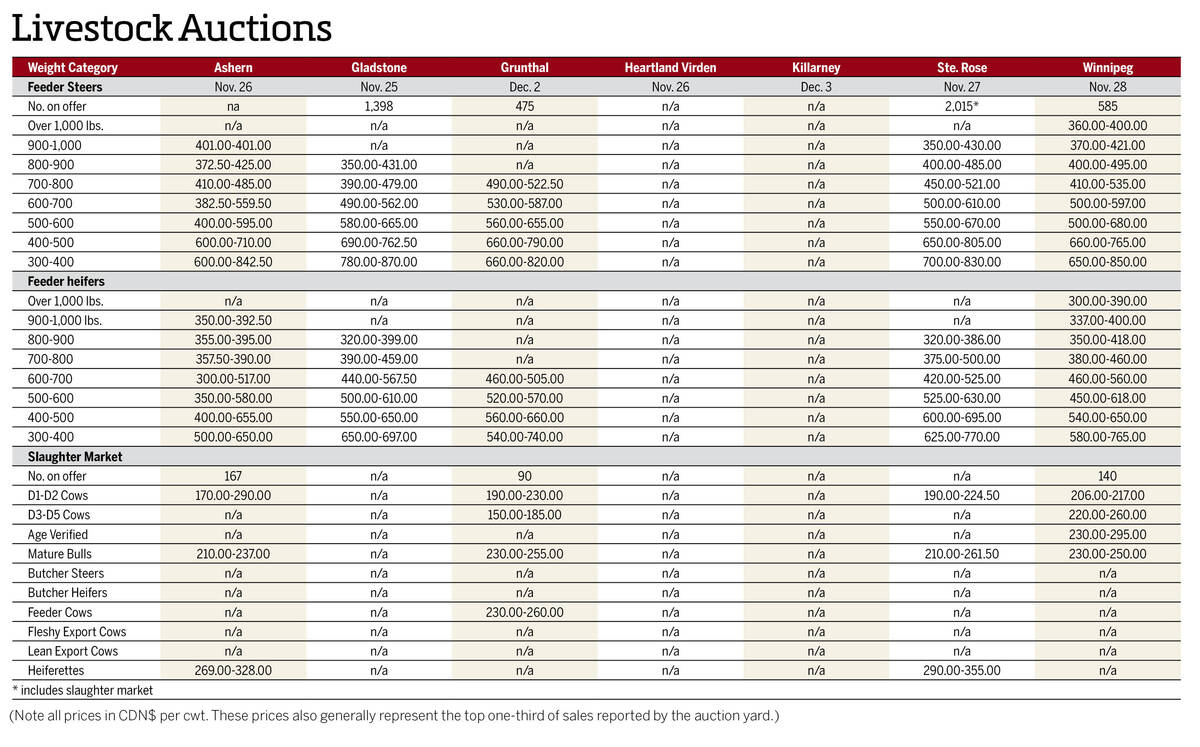
Manitoba cattle prices, Dec. 3
Cattle prices from Manitoba’s major livestock auction marts during the week Nov. 25-Dec. 2, 2025.
Increased efficiencies in the cattle-growing process are largely credited for this GHG reduction.
The assessment reflects three years of scientific analysis highlighting the Canadian beef sector’s progress between 2014 and 2021 on sustainability factors including GHG emissions, biodiversity, carbon storage, human health and safety, animal care, economic contributions and more.
It also includes sustainability strategies that identify areas for continuous improvement.
“The Canadian beef sector is committed to transparency and continuous improvement in sustainability,” Beierbach said.
“We look forward to further collaborations and innovations to make a positive impact and meet our goals for the Canadian beef industry’s social, economic and environmental performance.”
The report also reveals that land used for beef cattle production is estimated to store 1.9 billion tonnes of soil organic carbon, or 40 per cent of total soil carbon across the country’s ag landscape.
According to the CRSB, this is equivalent to the annual carbon dioxide (CO2) emissions from over two billion cars.
“This report on the Canadian beef industry’s advancements in sustainability is an important tool to track the sector’s progress towards its 2030 goals,” wrote federal agriculture minister Lawrence MacAulay in a news release.
“We can all be proud of the industry’s commitment to taking action to reduce their environmental footprint without compromising their high standards and commitment to quality they’re known for.”
Land used for beef production plays a critical role in wildlife habitat, according to the assessment. That land provides the majority of habitat wildlife needs for both reproduction (74 per cent) and feeding (55 per cent) when all of Canada’s crop and pastureland is considered.
Despite an overall loss of wildlife habitat on Canada’s pasture and cropland, beef’s share in what remains has increased.
“(The assessment) highlights the important role that beef production plays for preserving critical wildlife habitat and Canada’s grasslands,” wrote Brad Downey, chair of the CRSB’s scientific advisory committee.
“This report also enables transparency of the beef industry to the public and confirms significant progress based on sound data that sets the stage for meeting many of the Canadian beef industry’s 2030 goals through purposeful, science-based actions.”
Conversations around farmer stress and mental health have grown louder in the process increasing awareness, reads the report.
The stigma of mental health is decreasing, resources to support farmers are increasing, and 96 per cent of beef producers reported following at least one stress-management practice, it says.
Animal care continues to be a top priority for the Canadian beef industry. Seventy-nine per cent of respondents using antimicrobials declared that veterinary and/or label instructions on how to administer the product are systematically followed.
The report also includes some sales and macroeconomic data. Demand for Canadian beef remains strong with Canadian consumers (up five per cent) and around the world (16 per cent increase).
For every worker employed by farm-level production of cattle in Canada, 2.5 workers are employed either directly or indirectly in the Canadian economy. And for every worker employed in the Canadian meat packing industry, another 3.4 workers are employed, including direct and indirect employment.
The Canadian cattle industry contributes $51.5 billion in the production of goods and services, $21.8 billion to the Canadian GDP and $11.7 billion in labour income.
The report can be found online (crsb.ca/nbsa).






